Traditionally, consoles have always been pared with TVs. Being close to the living room and couch, that made sense. But things have changed and consoles can now be found in just about every room of the house. So, what’s a gamer to do for the screen? Can you use a computer monitor or do you have to use a television? Which is better?
The problem comes in many forms. While TVs are usually very large and are getting better in definition each year, monitors can offer options that most televisions can’t. Monitors on the other hand, while they usually have much better response time and resolution options than TVs do, they still don’t get quite as large—at least not without paying an arm and a leg for them. But there’s so much more than size, definition, and cost.
In this article I aim to cover some of the most asked about questions on this hot-button topic. By the end, you should know whether you should get a TV or monitor for your console gaming rig!
Table of Contents
TV and Monitor Terminology

Before going into the intricacies of why these two things are different and how they are, I feel that I should clear up any confusion regarding the terminology that’s going to be used in this article. Input lag, refresh rate, visual tearing… For a novice of screen terminology, a lot of these words may seem intimidating and confusing to some, but I promise they aren’t as scary as they seem.
We’ll start with refresh rate. Refresh rate is pretty easy to explain, as it’s just the amount of times that a screen will refresh an image over the course of one second. The higher this number, the smoother the image is supposed to be. For the most part, 60Hz is the base amount that a large number of screens nowadays will use, but 120Hz and above are also available in some instances.
Next, we’ll go over resolution. This one seems to stump a lot of people, but it’s actually pretty simple. For screens, resolution is how many pixels a screen can show. A pixel is “The smallest element with controllable color and brightness in a video display, or in computer graphics” according to the Chambers Dictionary. A large number of newer screens commonly have 1080p, but can also come in 1440p and 2160p. The number of pixels a screen can display ties into how crisp of an image you might get. The higher the number, the better the image.
The next confusing term is HDR since this one is still relatively new. HDR stands for High Dynamic Range and it plays a part in making the colors richer, the darks darker, the lights lighter, and is basically going to give you an all-around better image.
Response time and input lag go hand in hand for the most part, so I’ll talk about them both here. Response time is how long it takes for one pixel to change from one color to the next, so the lower this number is the better your response time. Input lag is basically how long it takes for your inputs to reach the screen. Same as response time, the lower this is the better your gameplay will feel and the faster you can respond to any attackers.
Main Differences Between Monitors and TVs for Gaming
The main differences between using a TV or monitor for your console games are that TVs tend to be cheaper, larger, and easier to set up. That’s because televisions are considered basic, non-specific home entertainment and even non-gamers will likely have one.
Monitors usually have much better response times, longer lifespans, and much lower input lag. Unlike televisions, monitors are considered specialty entertainment (or work equipment if you happen to work at a computer), so these are less likely to show up in your average non-gamer home.
Specifically:
- Price: TVs usually boast lower prices by comparison due to the sheer number available and the market of “everyone” and not just gamers.
- Functionality: Monitors have much better response times and less input lag, but TVs have much higher refresh rates on average.
- Size Options: TVs have a wider array of size options to choose from, but only monitors have ultrawide screen options, which is essential for some more competitive gaming.
- Screen resolutions and Quality: Newer TVs only come in 1080p and 2160p, but monitors can come in a mid-range 1440p option. TVs will more often than not have HDR build into them, which makes for better color reproduction, whereas HDR monitors are not only very few but also very expensive and may be buggy.
- Setup: Both TVs and monitors are plug-n-play, but monitors tend to have much shorter cables than TVs do.
- Average Lifetimes: Monitors tend to last longer than TVs usually do.
- Fitting It All Together: TVs were made to be easily viewed by a crowd of people, while monitors tend to focus on one person.

If You Are interested, Read Our Article About
Best Gaming Monitors: Our Top Picks
Price Considerations
Sometimes, after months of searching, you finally find the perfect screen, you take one glimpse at the price tag and it’s almost enough to make you forgo your new setup indefinitely. Cost can be prohibitive and even a big shock, but you can avoid this frustration from day one.
Before you head out to find the perfect type of screen for your setup you should be asking yourself just how much you’re willing to spend, and how much time you’re going to sink into actually using it.
For the most part, the bigger your screen is getting, the more expensive it is going to be. Same goes for higher resolutions and newer models. Sometimes specific brands will have higher prices than other brands do—like pretty much everything else in life. You’re paying for the name and not necessarily a superior product.
This works for TVs as well as monitors, so keep that in mind while hunting.
But is it TVs or monitors that will take home the prize of better prices? If your only concern is looking for the cheaper option overall, then TVs beat monitors more often than not.
If you have your sights set on a specific monitor or TV but can’t quite afford it, you may want to check for any refurbished or used ones, as they tend to be cheaper most of the time. Just be sure that if you decide to go this route, that you make 100% sure that the TV or monitor that you’re getting is from a reputable source with a return policy. Sometimes when trying to save a few bucks you instead end up with a battered and bruised piece of technology that might not even be the model or brand you’re looking for.
Research and diligence are key to getting your money’s worth.
Functionality
For some of those more casual and relaxing games, having a higher lag time on your screen of choice wouldn’t exactly be the end of the world. However, if you are playing games that require faster reflexes (looking at you, bullet hells and PVP games) then the lower the lag time the better.
When it comes to unfortunately long lag times, TVs tend to have embarrassingly high numbers. They can be slow as snot in winter. The input lag on monitors tend to be around 1ms to 5ms, with a few larger monitors or IPS displays being a tad bit slower, but TVs range from 5ms to some really sluggish 20ms.
Why Do TVs Tend to Be Slower Than Monitors?
The short answer is that HDTVs nowadays will usually use their own internal graphics. While this is responsible for giving a prettier and smoother picture for watching movies, it also makes it have much more lag when playing games.
To help curb this accidental lag, some TVs now come with a dedicated “game mode”, which depending on the specific TV can help to ease some of this lag for a more enjoyable game. However, even with this game mode, monitors still win for speed.
If you’re looking for a screen that you intend to mostly use for casual gaming, then a TV can offer a wide selection of large and colorful screens to pick from. But if you’re in the mood for some action packed online competitive play, then a monitor can’t be beat for response time.
But it’s not a total loss for TVs in this category, as on average, TVs will have really fast refresh rates. The refresh rates for televisions are so fast, in fact, that there’s a chance that they can do something called motion interpolation, or the “soap opera effect”.
What Is the Soap Opera Effect? Why Does It Happen to TVs?
Basically, it’s when a TV will fill the gaps between frames by either repeating a frame a few times or using a program inside the TV itself to analyze the existing frames and create new ones.
This can make the images in the TV look more realistic, but some people don’t like the effect. Good news is that if you don’t like the effect either, most TVs also offer options to turn it off.
Size Options
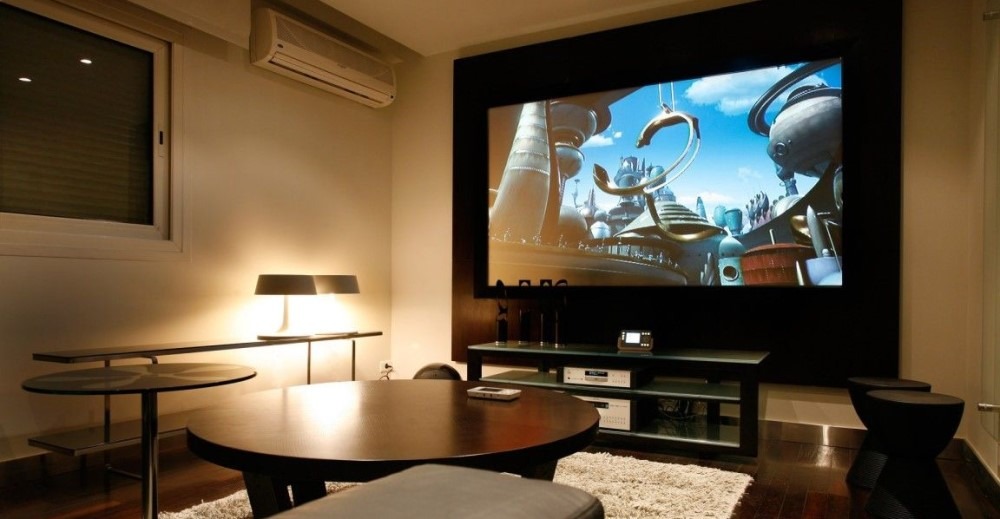
Sure, a nice resolution, lower lag times, and built-in speakers are all well and good, but some people require a little more than that. Some people want the absolute largest screen they can feasibly acquire, whether it be because they plan on sitting farther away, having lots of friends over, or just because they want to show off. No shame in any of that, my friends!
The good news is that TVs and monitors are measured the exact same way: diagonally. It seems weird if you’re not used to measuring that way, but it’s the standard now. Both are measured starting from one viable corner of the screen to the other, diagonally, not including the “bezel”, or the plastic edges.
TVs may not have the best response times compared to monitors, but when it comes to sheer size alone, TVs have monitors beat by a significant amount. While monitors can come in sizes ranging from 19” to 34”, some monitors even step up to 40” on occasion. TVs like to start at approximately the same size, but can go up to an impressive 100”!
While you can find monitors that get pretty large, almost as large as some mid-range TVs, they usually end up being pricier than a TV of the same size.
TVs come in glorious sizes, casting an ominous shadow over monitors, but if you’re a fan of the immersive feeling of an ultrawide screen, then I’m afraid to say that ultrawide is, as of this moment, a monitor exclusive trait. That’s right, I’m sad to say that there’s currently an untapped market for ultrawide TVs, as no companies have come out with any as of the writing of this article.
Screen Resolution, Graphics Options, and Quality
Nowadays, TVs are mostly only available in Full HD (1080p) and 4k Ultra HD (2160p) resolutions. Monitors on the other hand, can come in 1080p, 1440p, and 2160p.
If 1080p isn’t good enough for you, but 2160p is too much, then monitors come in a sort of middle ground resolution. This 1440p size is perfect if you don’t want to spend a whole lot but without sacrificing too much image quality.
HDR is a very common thing in TVs, and almost all of the new ones will sport it. For monitors though, they’re only just recently dipping their toes into HDR, and a lot of PC games still don’t really support it on behalf of it being pretty buggy. Since console games are usually made with people using TVs in mind, then the bugginess of using a monitor with HDR isn’t nearly as noticeable, but can occasionally still surface.
Some people claim that TVs have the potential to cause aliasing, which is when normally round or curved edges have a jagged and almost saw-blade like appearance. Simply put, monitors don’t do this. However, others say that they’ve had no aliasing that they’ve seen on their TVs. I can’t say I’ve ever experienced aliasing while I was console gaming, but I guess it’s just something to be aware of.
For sheer potential picture quality, TVs blast past monitors and leave them in the dust. Even with super high-end monitors that support HDR, TVs have had the technology for longer and have ironed out most, if not all, the bugs that may come with it.

If You Are interested, Read Our Article About
Gaming on Projector vs TV – What is The Most Fun?
Setup Considerations
A common problem for some users is that they get so excited for their new beautiful screen of choice that they forget to check whether it’s actually compatible with their current setup. Don’t let the similarities of TVs and monitors catch you off guard; they are more different than they appear.
TVs typically have very long cords, so picking a viable spot where it can reach your console and still look nice can be a bit easier. Whereas monitors were made with having what they’re connecting to very close by, so their cords tend to run on the shorter side, which can cause some trouble when setting up your rig. In fact, this isn’t a problem solely plaguing console gamers. PC gamers have long complained that their monitor cords are too short. Thankfully, monitor cords can be replaced with longer ones, but it is an added cost to keep in mind.
But what about connectors, do they share anything here? Well, both TVs and monitors will most likely have an HDMI port on them, but that’s about where their similarities end.
In addition to the HDMI connection, monitors can also occasionally have a DisplayPort, DVI, USB ports, and some have 3.5mm audio input and output jacks.
TVs like to go to the extreme, sometimes having not just one, but two HDMI ports, as well as usually having at least one USB slot, 3.5mm headphone jack, an optical audio port for Hi-Fi speakers (which are great for home theaters), an ethernet connection on smart TVs, and a coaxial connector for cable or antennae. Whew! TVs sure like their ports and connectors, don’t they? Many gamers use just one or two of these, others like to fill them all up.
Average Lifespan
A common complaint about modern technology is that it’s not built to last as much as older stuff was. Some devices are prone to dying really early. But what about TV screens and monitors? Do either one of these tend to last longer than the other?
Place your bets now: will it be TVs? Monitors? Or maybe they’re tied for the same spot… Wonder no more!
Probably to no one’s great surprise, monitors tend to outlive their TV competitors.
While I can’t say that all monitors will always outlive TVs because of brand differences, what each is used for, etc., I can say that monitors do tend to cling to the last legs of life for much longer than TVs do.
Certain TVs weren’t made for the kind of continuous and strenuous use that console gaming demands. That means they tend to die really fast, which may make you get a replacement much sooner than if you had picked a monitor in the first place.
Fitting It All Together
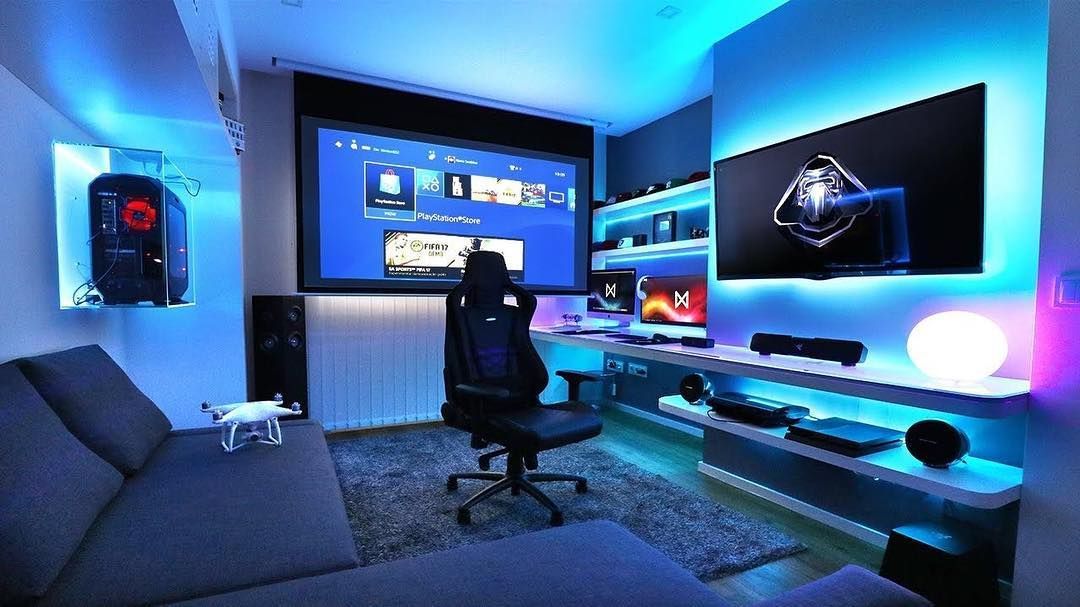
While I can’t speak for everyone, I think at least a few of you will agree that there is sometimes that strong urge to just buy the biggest screen you can find, even if it’s just for the sheer ridiculousness of how large they can get. But refrain! For if you were to buy that super mega deluxe screen without taking the rest of your game room (or even the doorway) into account, you may not even be able to use the thing, which would be a damn shame.
Before splurging on a new screen, whether it be a monitor or TV, you should make sure that whatever it is can actually be used with your setup. I don’t just mean that it can be connected and successfully used with your device either. You need to be sure that it can also fit in the room and at the place you want it to be, as well as if it looks good when viewed from that angle.
Some TVs and monitors, particularly the curved ones, tend to look… sub-optimal when viewed from any angle other than directly in front. So, if you were to invite your friends over for a game night, then they may not be able see as well as whoever is sitting in the center. Unless of course you are all playing in one uniform gamer column, which would be very impressive, but not very practical or safe.
On a similar note, TVs tend to be the better option if you plan on having people over a lot. TVs have long been made for accommodating multiple people who all watch the same screen. But if you plan to mostly game on your own, then a monitor might be better.
You should also take the size of the room into account, as well as whether you plan on setting your screen on a table or mounting it on the wall. Yes, this matters! Again, cable lengths, inputs, surrounding furniture, and mounting specs all play a huge part in picking what works best for your game cave.
If you have a particularly limited space, you should be sure that the screen you’re getting can actually fit correctly into the space you want to put it in. Measure the wall and compare it to the dimensions of your screen. Don’t forget to factor in where the cables will be running and any airflow space requirements.
If you plan on wall mounting, TVs tend to have more resources available to help with this, but ones for monitors do exist. Make sure that the wall you plan on sticking it to has a stud, otherwise your poor screen may just tumble off the wall and crush not only your dreams but also someone’s foot.
Features
TVs tend to have more features built into them; such features newer TVs like to boast include special built-in apps, built-in speakers, remote functionality, multiple inputs, game specific modes, and some even have Bluetooth! That doesn’t cover all of the things newer TVs can have, but it does cover a significant portion.
So, how do monitors compare? Well, frankly, not good. Going off of features alone, most monitors usually have some features to help adjust how it looks, and that’s it. For the most part you can’t even connect a remote to turn a monitor off from a distance. Depending on your gaming setup (and maybe even how lazy you’re feeling that day), this may just be a deal breaker.
While pretty much all TVs have built-in speakers, that’s a trait monitors don’t tend to share. In fact, monitors with built-in speakers actually tend to cost more than their silent brethren, and many gamers actually hate that feature in monitors anyway.
Without built-in speakers you would probably have to spend extra money getting a sound system. Unless of course you like to play games in eerie silence, in which case I am afraid of you.
One thing that monitors have going for them in this category that most TVs don’t, is that monitors tend to turn on the moment they sense input from the device they’re plugged into. This means that, unlike if you were to use a TV, you wouldn’t need to bother using a remote or the power button to switch it on. Just flip on your console and get ready to kick butt.
Also, if it fits your fancy, then monitors can also have built-in webcams, whereas TVs don’t typically offer this.
Conclusion
It probably won’t come as a surprise to some that monitors tend to be the best option in most of these categories. After all, they have been specifically made with gaming in mind. For that epic pro gamer in your life, you may be better off getting a monitor for your setup, as monitors tend to offer lower input lag and better response time.
However, if you’re more a fan of casual gaming, comfort, and convenience, a TV may suit your needs better. TVs also tend to have better picture quality, but may require you to turn on a “game mode” to reduce any potentially obscene lagging.
The decision for what to add in your game cave is up to you!
Last modified:

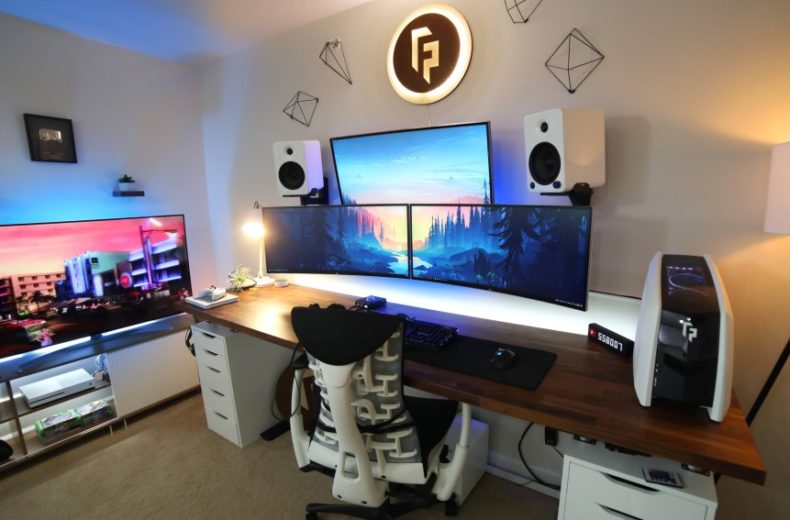




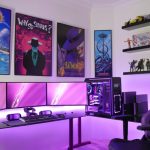


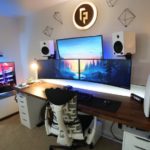





great! buddy
Hello, just wanted to say, I loved this article. It was helpful. Keep on posting!|